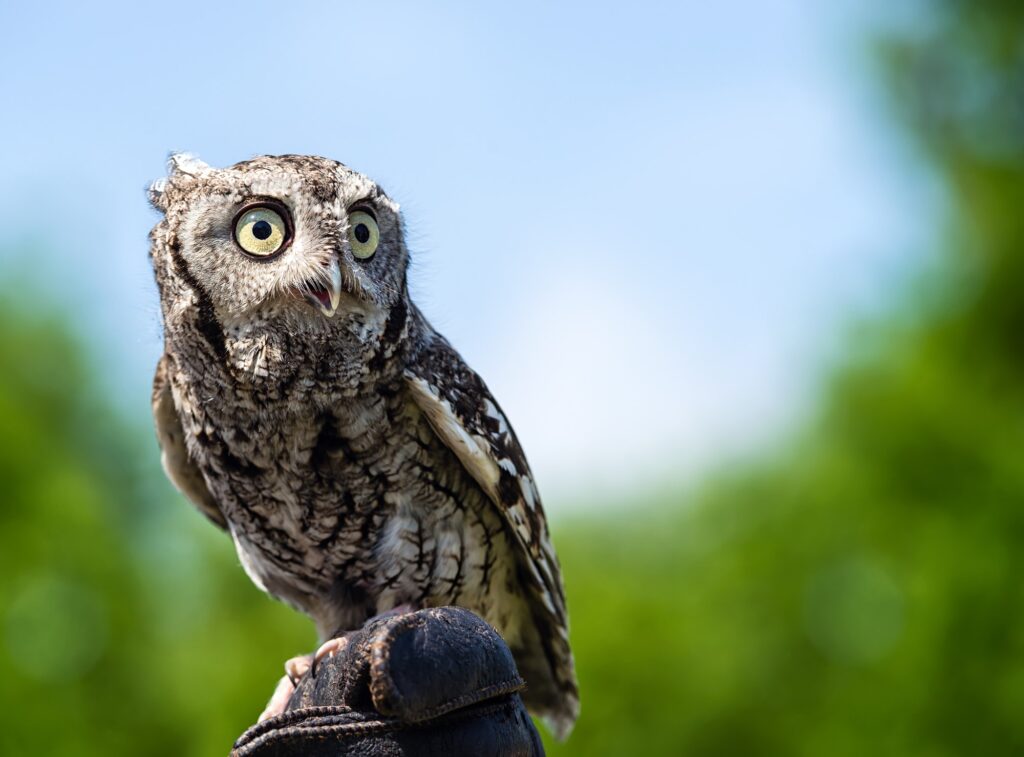Vermont is well-known for its artisan food, maple syrup, cheese, and fresh produce. The state is home to many farms. Therefore, as you explore the six million acres of Vermont, you might spot something else the state is known for; owls. Nine different species of owls are native to Vermont.
Vermont’s Marsh-Billings-Rockefeller National Historical Park (the only national park in the state) makes for a great bird-watching location. Birdwatchers might also enjoy Vermont’s 21 state parks.
We’ve compiled a list of all nine types of owl species you may come across while in Vermont. Let’s dive right in!
Eastern Screech Owl
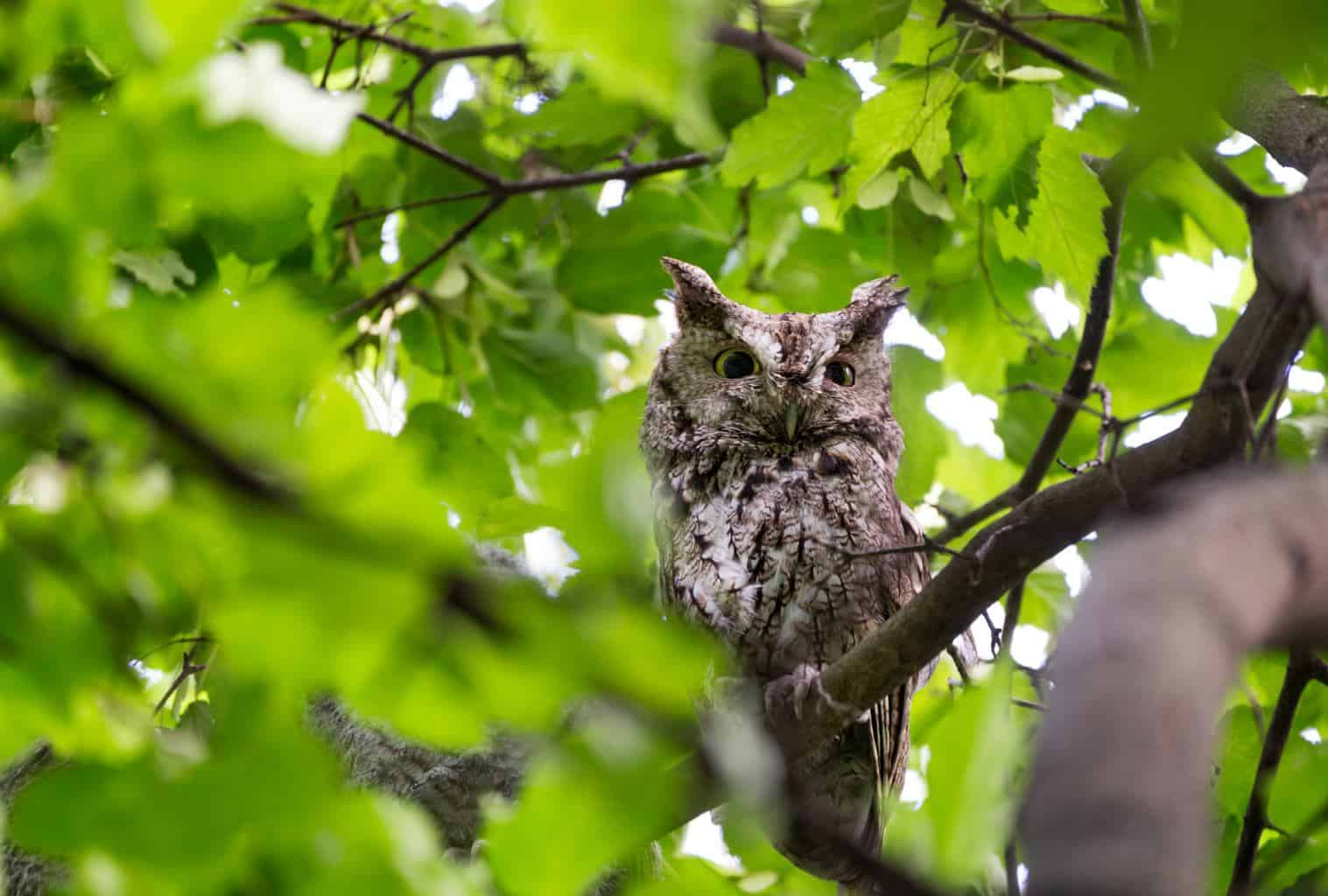
- Scientific Name: Megascops asio
- Length: 6 – 10 inches
- Weight: 4.2–8.6 ounces
- Wingspan: 18.9-24.0 inches
The Eastern Screech-owl has a unique pattern of grey feathers and sharp ear tufts that make it easy to identify. This “tree color” pattern also enables the owl to camouflage itself easily.
Eastern screeches have a life expectancy of 14 years. Their diet consists of rats, squirrels, rabbits, and skunks.
Additionally, they usually inhabit areas where the trees are dense. However, they’re also capable of nesting and breeding in suburban areas. The eastern screech owl tends to avoid areas inhabited by larger owls, like the great horned owl.
This species of owl is a permanent resident of Vermont and appears to be distributed evenly all over the state.
Great Horned Owl
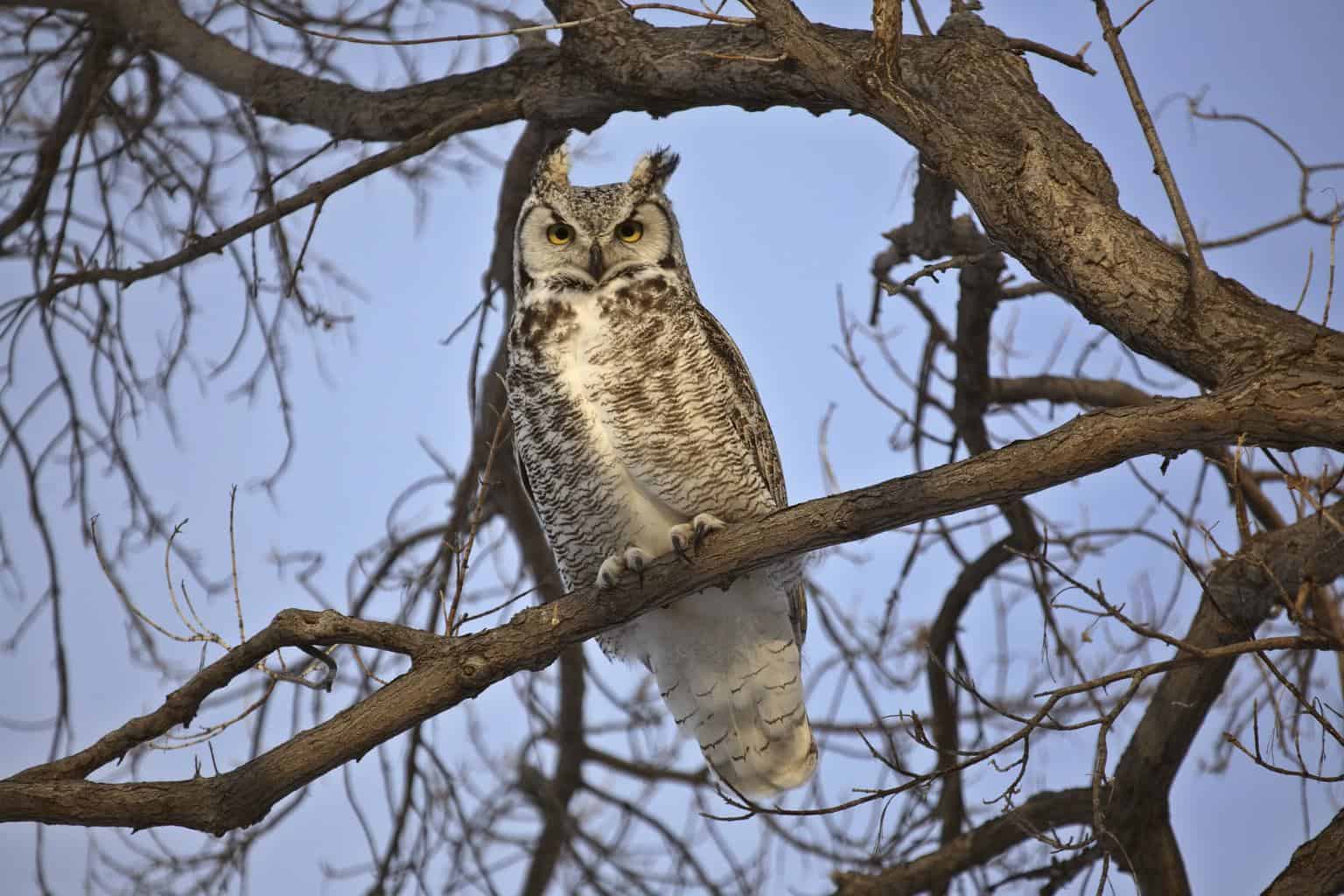
- Scientific Name: Bubo virginianus
- Length: 17-25 inches
- Weight: 49-55 ounces
- Wingspan: 39.8-57.1 inches
The Great Horned owl is also a permanent resident of Vermont. It feeds on larger prey, including squirrels, rabbits, skunks, and other owls like the eastern screech owl.
The owls’ habitat consists of coniferous and mixed woodlands with mature trees, but they’re found all over Vermont. The Great Horned owl is extremely habitat-adaptable. This means that it can inhabit any area as long as there is a good tree branch and a rocky nesting site.
Despite what the name suggests, this species of bird doesn’t have horns, but rather long, pointed ear tufts. Its name is a result of the appearance of its silhouetted ears.
The Great Horned owl is most active in the early winter. It’s extremely territorial and protects its territory and eggs by hooting vigorously.
Barred Owl
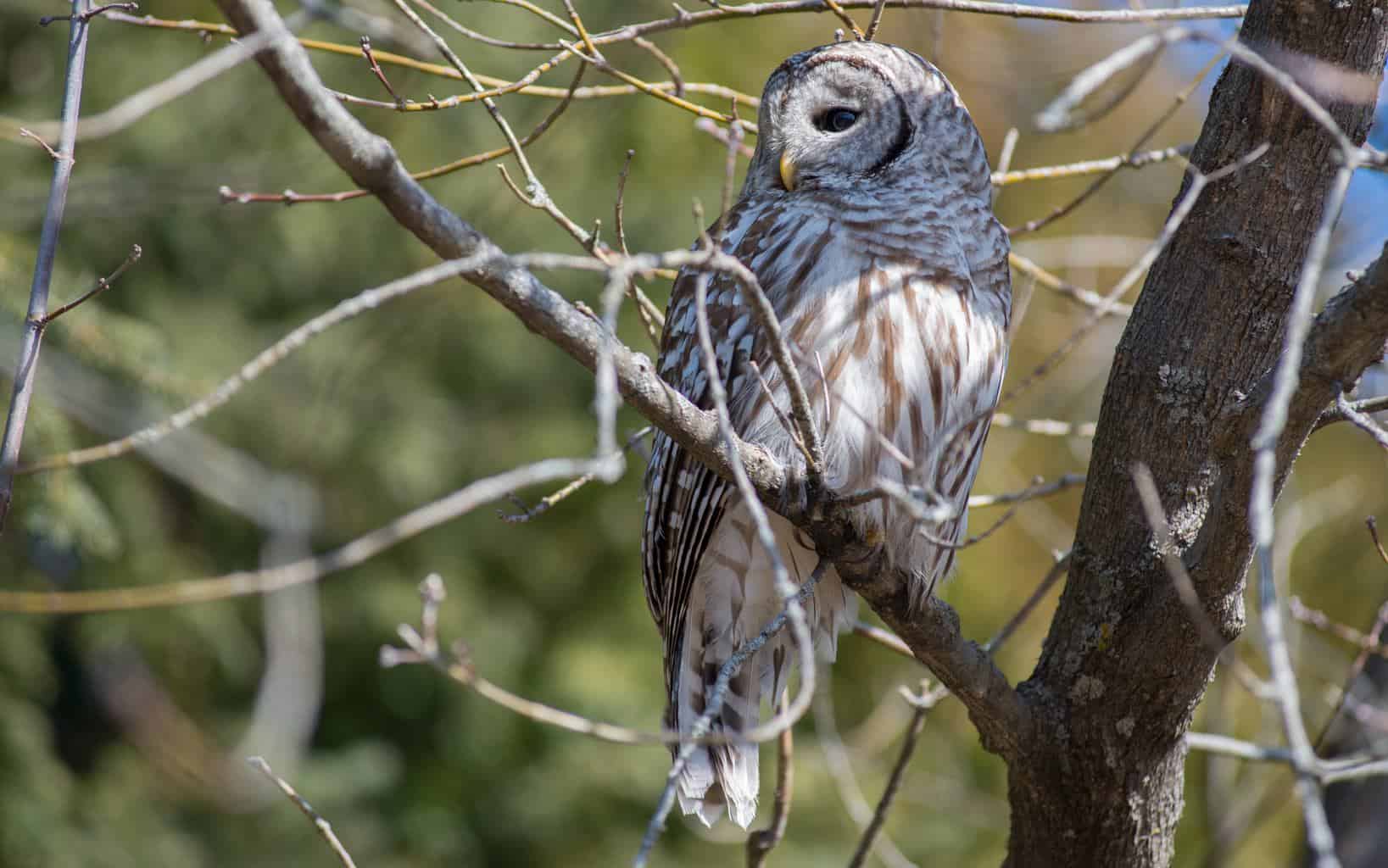
- Scientific Name: Strix varia
- Length: 16.9-20 inches
- Weight: 16.6-37.0 ounces
- Wingspan: 39.4-49.2 inches
The Barred owl is a year-round resident of Vermont because it is non-migratory. They’re nocturnal but may occasionally hoot during the day.
This species has a very distinct call but can also be easily identified by its appearance. The owl has mottled brown and white feathers and a brown barred pattern on its underbelly, tail, and wings.
These owls feast on anything made out of meat. They usually eat tasty summertime food like rodents, frogs, snakes, fish, turtles, birds, and insects.
Like the Eastern Screech-owl, this species is preyed upon by the Great Horned owl. Therefore, Barred owls tend to relocate if a Great Horned owl is too close to their nesting ground. Otherwise, Barred owls rarely stray from their place of birth. They opt to remain within 6 miles of where they were born.
Barred owls are also very territorial, making them easier to spot. Bird-watchers can lure out the owl by imitating its call. When they hear the call, the owls may fly out to investigate.
Snowy Owl
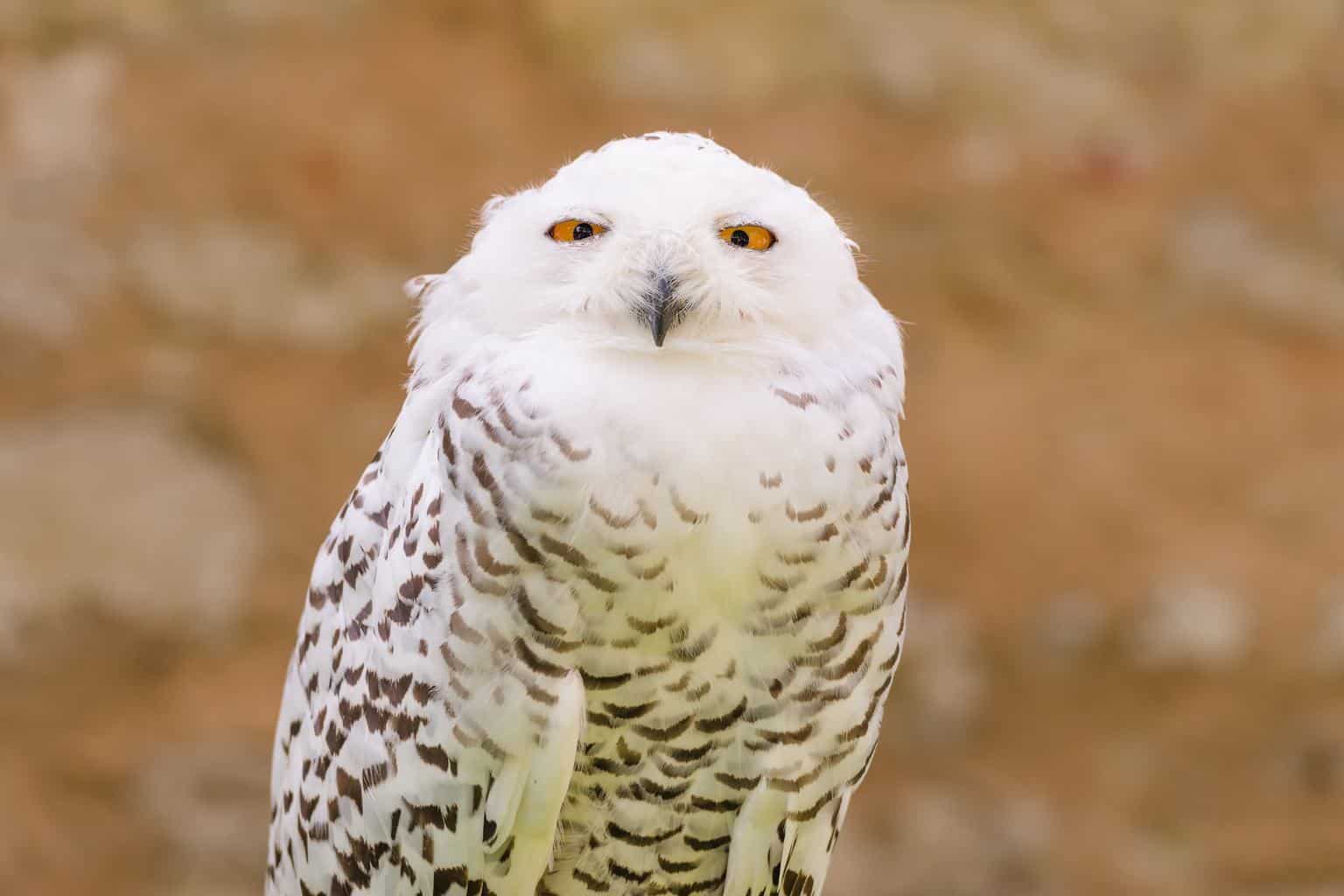
- Scientific Name: Bubo scandiacus
- Length: 25-29 inches
- Weight: 70.5 ounces
- Wingspan: 49.6-57.1 inches
This owl gets its name from its white feathers and snow-like appearance. These white feathers are vital for its survival because the owls naturally inhabit the tundra region, and it allows them to camouflage well.
Their life expectancy is ten years. Their favorite foods are birds, rabbits, fish, and rodents.
The owls in this species are also incredibly aggressive when it comes to defending their territory. The Snowy owl will even dive at arctic wolves or humans that come too close to their usual breeding ground. If you see a Snowy owl, be cautious and don’t stray too close.
This owl also has a hoot that can be heard up to seven miles away. The hoot is another method the owl uses to deter predators.
Snowy owls migrate as the season’s change. Therefore, these owls can only be found in Vermont during the winter when it’s too cold in their usual habitat.
Short-Eared Owl
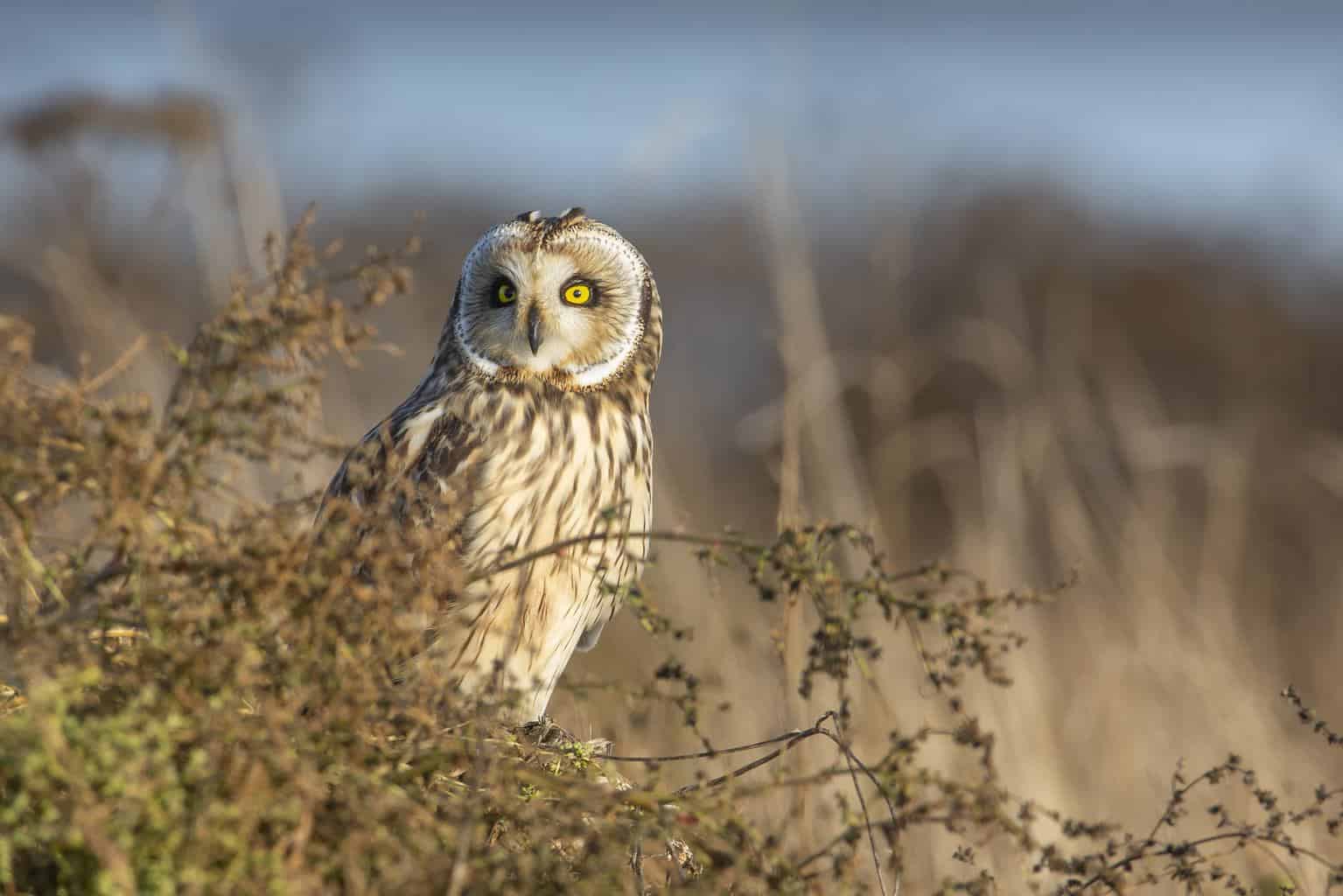
- Scientific Name: Asio flammeus
- Length: 13-17 inches
- Weight: 7.3-17 ounces
- Wingspan: 33.5-40.5 inches
These owls, as the name suggests, have extremely small ear tufts that are difficult to see. They also have brown feathers with buff spots.
Short-eared owls have a life expectancy of 4-12 years. Furthermore, their diet consists of voles, mice, and squirrels.
Short-eared owls usually nest in open grasslands. Unlike some owls, they’re active day and night, especially during their mating season. Mornings are for courting rituals, and the nighttime is for soaring over their preferred hunting ground. Their activity makes it easier for birdwatchers to spot them.
This owl is a permanent resident of Vermont and has used the destruction caused by strip mining to its advantage. It has turned the abandoned strip mines into its nesting and breeding grounds.
Long-Eared Owl
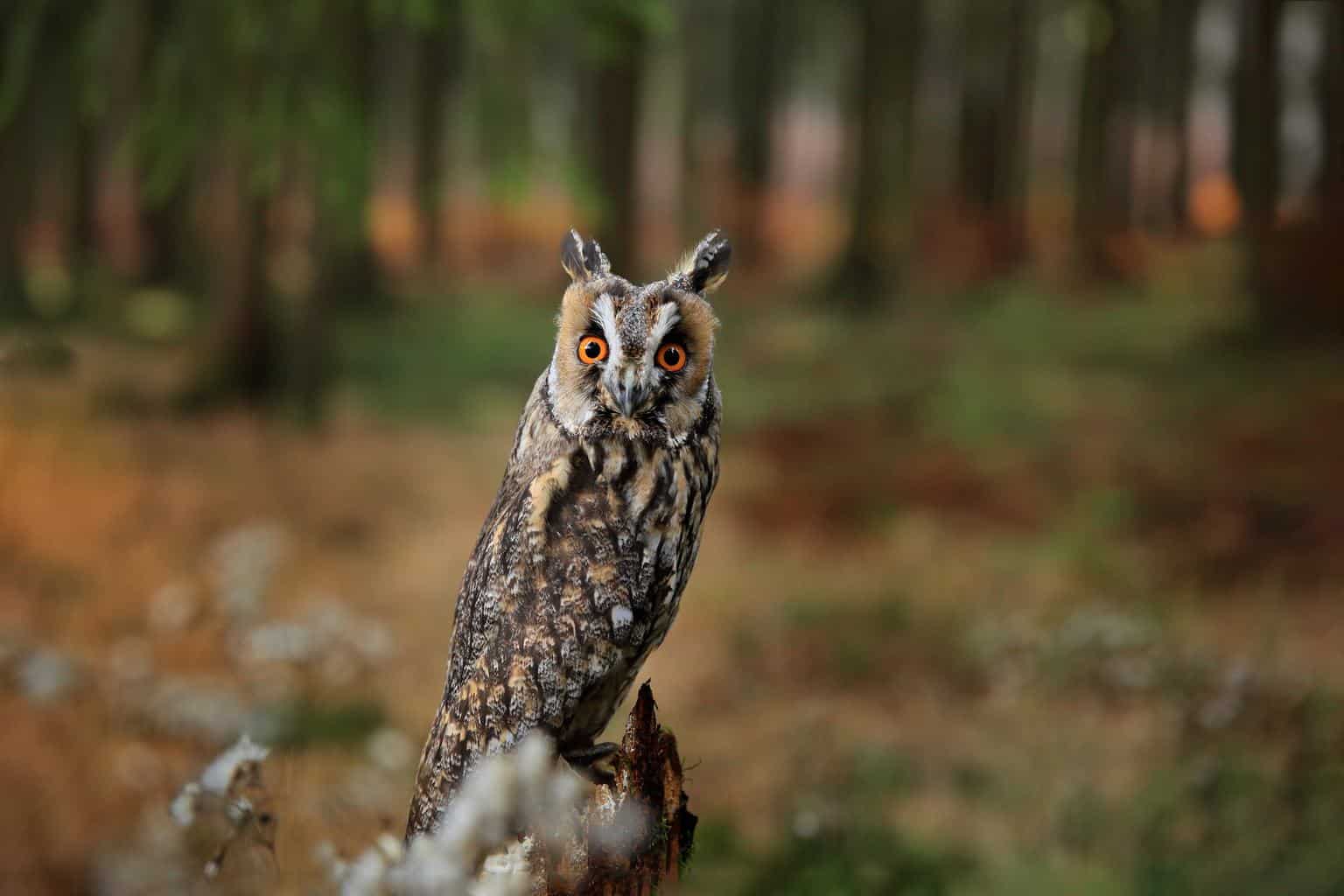
- Scientific Name: Asio otus
- Length: 14-16 inches
- Weight: 9 ounces
- Wingspan: 35.4-39.4 inches
These owls are easily identified due to their long, pointed ear tufts. They have a stout body that’s covered in dark feathers, which contrasts with their orange faces.
Colonies of Long-Eared owls are made up of hundreds of owls! However, this number decreases slightly during the mating season. While the size of the colony decreases, the owls don’t go far. Most owls from the same colony will still roost within 50 feet of each other.
They naturally inhabit open grasslands and coniferous woodlands. They tend to nest in larger areas that can accommodate their colony.
Long-Eared owls have a shorter lifespan than some of the other owls on this list. They live for about four years. They have a diet that consists of small mammals, mice, rats, and rabbits. These owls are also known to swallow their prey whole.
Their behavior and migratory patterns mean that they aren’t always in Vermont. This species will usually use Vermont as their breeding ground.
The best way to find the Long-Eared owl is to listen to, and follow, the sound of its hooting.
Northern Saw-Whet Owl
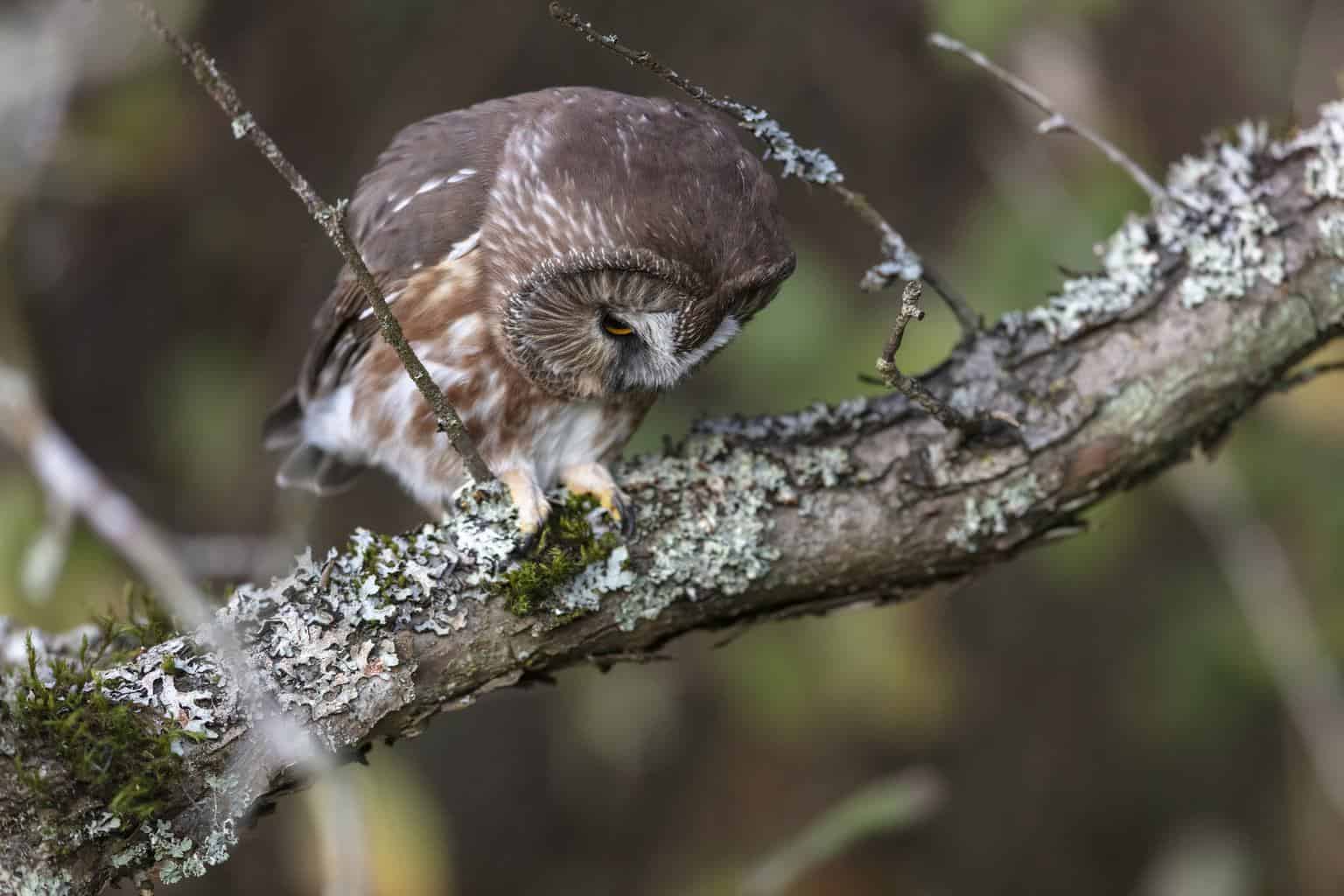
- Scientific Name: Aegolius acadicus
- Length: 7.1-8.3 inches
- Weight: 4 ounces
- Wingspan: 16.5-18.9 inches
The Saw-whet owl has a big, round head, wide orange eyes, and a small body. Its wings and back are covered with brown feathers that contrast its white underbelly.
It has a lifespan of up to seven years. It’s also known to feast on small birds, young squirrels, voles, and shrews.
It’s a year-round resident of Vermont and inhabits dense forests of deciduous trees, especially during mating seasons. The female Northern Saw-whet owl is said to keep her nest very neat.
Their small size makes them susceptible to attacks by predators like the Great Horned owl.
Barn Owl
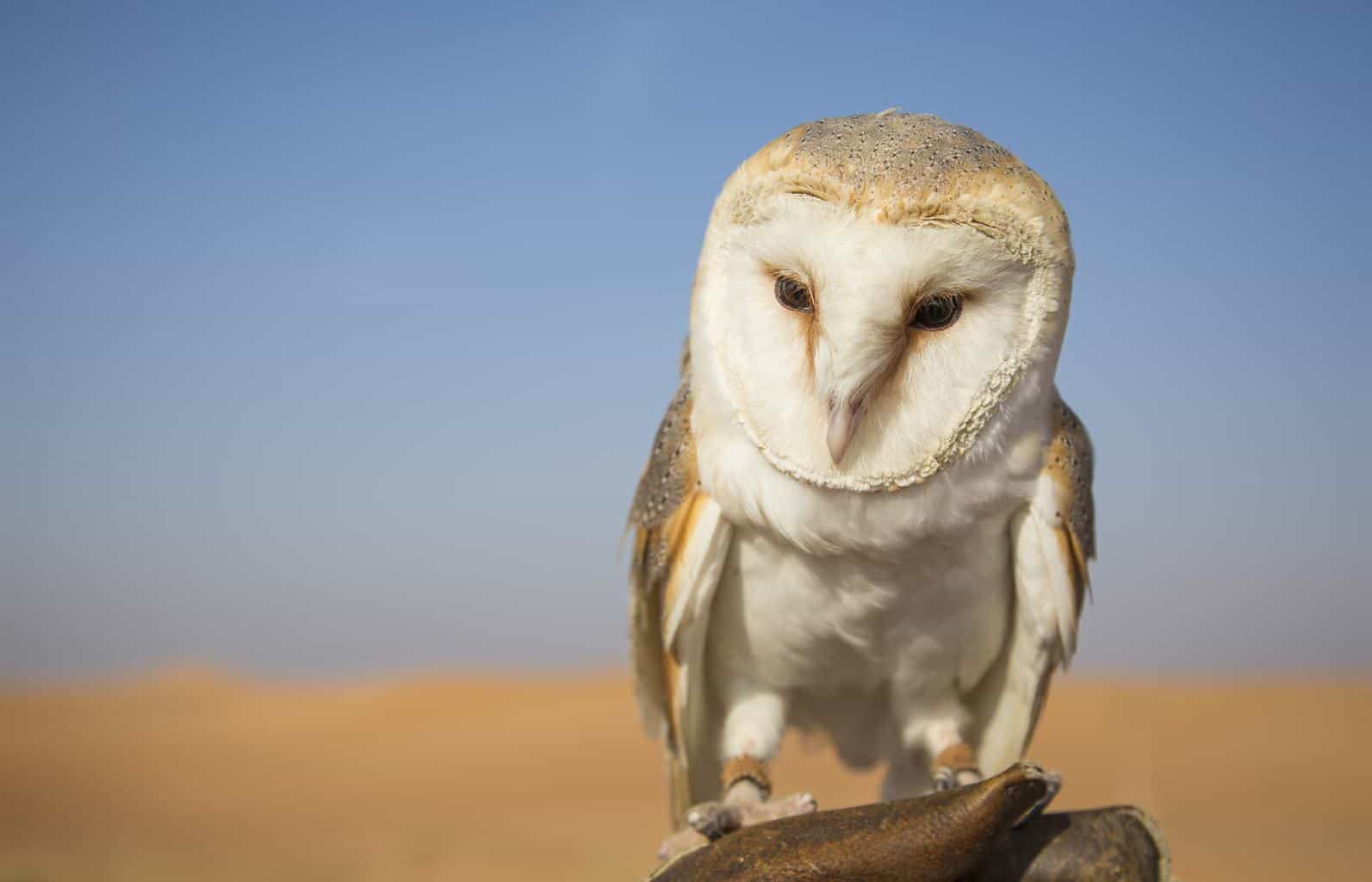
- Scientific Name: Tyto furcata
- Length: 12.6-15.7 inches
- Weight: 15-22 ounces
- Wingspan: 42.1-43.5 inches
Barn owls are perhaps the most easily recognizable owls. They have unique features that make them easy to identify. They also have a distinct hooting call.
These owls are permanent residents of Vermont and 48 other states. They’re commonly found in open grassland areas and in the southern regions of the state. These owls often make their nests in hollow trees, buildings that have been abandoned, or areas with dense foliage.
The barn owl is more active during its breeding season. Therefore, if you want to spot one, the best time would be between March and April.
It has a life expectancy of up to four years, and its diet consists of mice, shrews, and voles. Barn owls are extremely impressive hunters. They’re often capable of catching prey in complete darkness. Additionally, barn owls can sometimes find prey that’s completely camouflaged.
Barn owls have pale brown feathers with buff tips. Their bellies are covered in white feathers. In some lighting, they may appear to be completely white.
Great Gray Owl
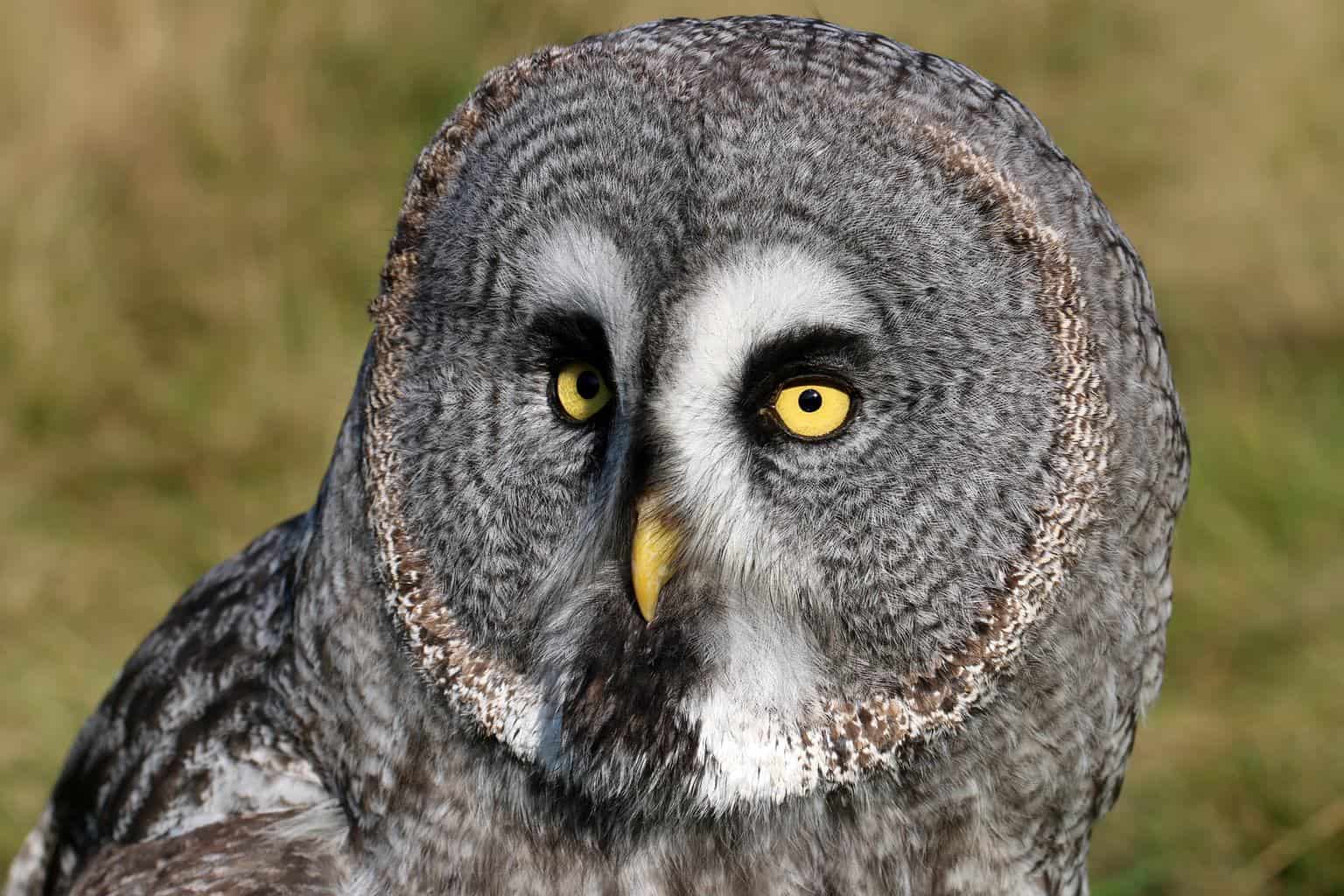
- Scientific Name: Strix nebulosa
- Length: 24.0-33.1 inches
- Weight: 24.7-60.0 ounces
- Wingspan: 53.9-60.2 inches
The Great Gray owl is the tallest owl in the United States, but it’s not the heaviest. Despite its lack of weight, this owl is extremely strong. It has been reported that these owls can break through ice thick enough to withstand the weight of a human, to catch small animals.
Due to their size, they need to eat seven vole-sized animals a day. Their diet consists of 80-90% rodents. However, they also eat birds like thrushes, grouse, and ducks.
The Great Gray owl is only present in Vermont in small populations. Since the Great Gray owl doesn’t have a breeding presence in Vermont, they will likely have strayed out of their usual nesting area in search of food.
This species is elusive since they tend to make nests in dead trees. Additionally, they’re easily disturbed, making it vital to be careful if you spot one.
Conclusion
In conclusion, owls are only one of the many different bird species found in Vermont. Other birds found in Vermont include several species of hawks and woodpeckers.
The state has a total of nine different owl species. These species have varying lifespans, diets, nesting areas, and sizes.
Birdwatchers should be wary of some species. Species like the Snowy and Barred owl can be aggressive towards humans that get too close to their territory.
Most of the birds are permanent residents. However, some can only be spotted in Vermont during specific seasons or because they are hunting. If you want to visit Vermont to spot these species, be sure to pick the date of your trip accordingly.

